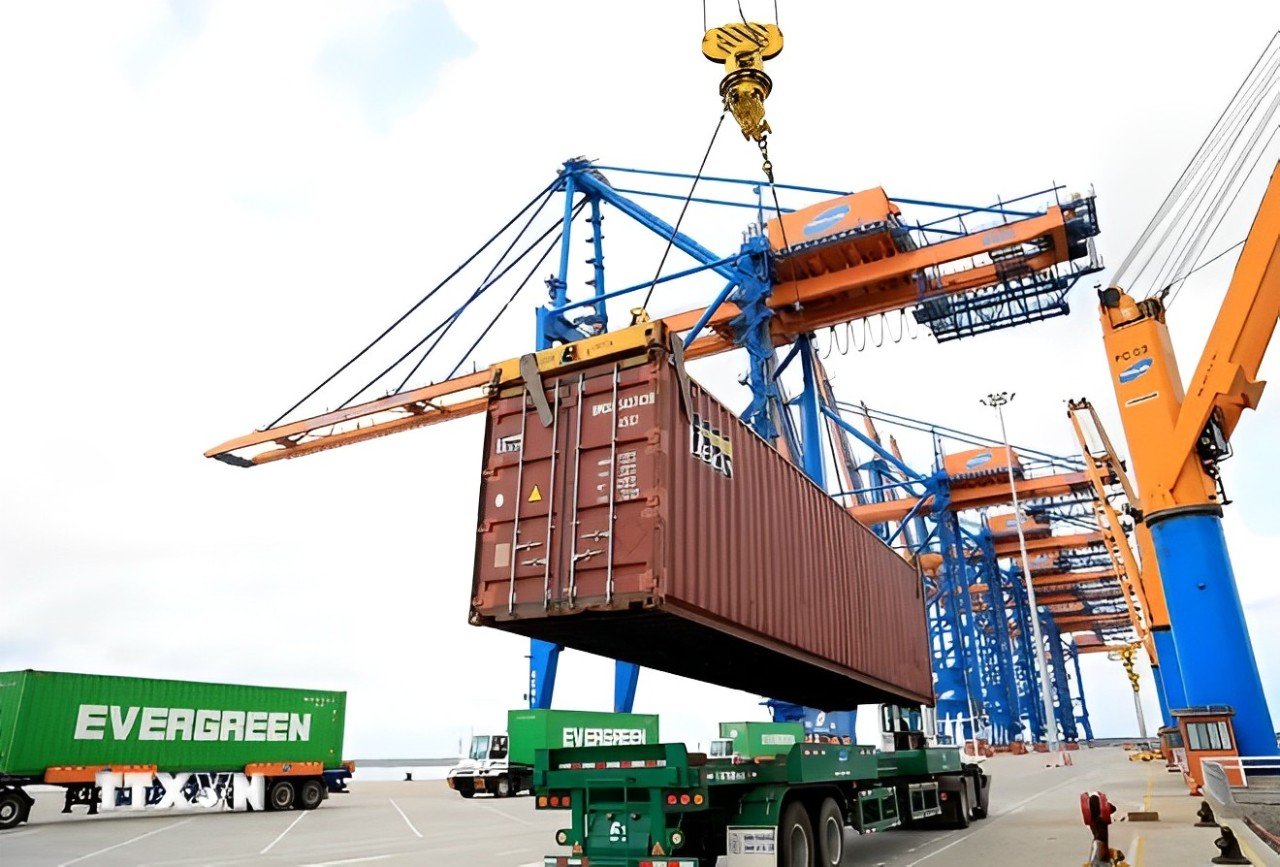Although it is unlikely to increase sharply in 2025, container freight rates may still increase at certain times, especially during peak seasons or when there are supply chain disruptions.
International container freight rates in 2025 are forecast to continue to fluctuate. Although it is unlikely to increase sharply, freight rates can still increase at certain times.
The comment was made by a representative of the Ho Chi Minh City Logistics Association (HLA) at the 3rd Ho Chi Minh City Logistics Forum, which took place on the afternoon of November 15.
According to Ms. Vo Thi Phuong Lan, Vice Chairwoman of the Ho Chi Minh City Logistics Association, the world container freight rates as well as the Ho Chi Minh City to the West Coast of the United States or Europe have fluctuated greatly in the past year.
Although it is unlikely to increase sharply in 2025, container freight rates may still increase at certain times, especially during peak seasons or when there are supply chain disruptions. However, fierce competition between shipping lines can help curb the increase in freight rates.
Ms. Vo Thi Phuong Lan analyzed many factors that could affect the market in the coming time. Specifically, global transport capacity is forecast to increase by 8%, while demand will only increase by 3%, helping to reduce the pressure of price fluctuations.
Meanwhile, factors such as the Red Sea conflict, the blockage of the Panama Canal, strikes at some seaports... will continue to disrupt supply chains and increase shipping costs.

"The emergence of the new shipping alliance (Gemini Cooperation) and MSC's cooperation strategy will create significant changes in the shipping service network," Ms. Lan analyzed, adding that the U.S. tariff policy on Chinese goods and the trend of supply diversification will impact the global trade model. bringing both opportunities and challenges to the container shipping market.
In the face of unpredictable fluctuations in international freight rates, experts note that businesses need to be equipped with in-depth knowledge on building sustainable partnerships with shipping lines, optimizing transportation costs and applying effective fare fluctuation risk prevention tools.
To respond, Ms. Vo Thi Phuong Lan recommends that businesses closely monitor the market and be flexible in transportation strategies. Optimize costs by digitally transforming to reduce costs in supply chain management and help customers calculate supply chain prices quickly. The business also focuses on cooperating with reputable logistics partners, diversifying the import-export market and carefully researching and researching international logistics partners.
Regarding the transportation of e-commerce platforms, Mr. Phan Manh Ha, Director of External Relations of Shopee Vietnam, said that the exchange considers logistics as a pillar, with the goal of both reducing transportation costs and increasing customer experience; In particular, together with partners to build supply packages (delivery) to diversify choices for customers.
Shopee learns the strengths of logistics service providers to have a good cooperation option, because there are strong suppliers in remote areas, suppliers are strong in delivering compact products.
In the face of the strong development of Vietnam's economy and especially Ho Chi Minh City, logistics infrastructure plays a key role in connecting and operating the supply chain effectively.
The upgrading and optimization of logistics infrastructure systems is posing many challenges for Vietnamese businesses, especially the problems of technology investment costs and high-quality human resources.

Mr. Pham Thanh Son, Director of Hiep Phuoc Newport Joint Stock Company, acknowledged that over the past time, Vietnam as well as Ho Chi Minh City have issued many policies related to logistics, facilitating the exploitation, import and export of goods. Many infrastructure works and projects have been implemented to help this field thrive.
However, according to Mr. Son, many traffic bottlenecks have not been removed, causing difficulties in the city's logistics development.
Currently, the internal connection of Ho Chi Minh City may be good, but the inter-regional connection with Binh Duong, Long An, and Dong Nai is still difficult.
The city needs to accelerate the road transport infrastructure project, the progress of investment in the logistics centers that have been planned above; at the same time, synchronously develop infrastructure, including transport infrastructure and digital infrastructure... to develop the logistics industry.
Ho Chi Minh City currently has about 9,600 enterprises registered in the logistics service industry, accounting for 36.7% of logistics enterprises in the country.
The city has Cat Lai Newport and Hiep Phuoc Newport, accounting for more than 90% of the city's import and export volume, nearly 50% of the country's goods, contributing 20.5% to the city budget. The city aims to develop logistics into a key service industry, making a positive contribution to production and business activities in the area.
Vice Chairman of the People's Committee of Ho Chi Minh City Vo Van Hoan said that besides the advantages in the implementation process, the city has realized that this is a new industry, synthesized from many industries and fields, so there are still many limitations in the development of the logistics industry such as logistics infrastructure, application of information technology and human resource development.
The city wants to listen to opinions from all parties, thereby helping the city implement solutions, remove bottlenecks, support the development of the logistics industry, promote the potential and strengths./.











